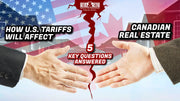
Understanding Tariffs: More Than Just Taxes
Tariffs, those enigmatic economic instruments, have shaped global commerce for centuries. At their essence, tariffs are taxes imposed on imported goods, ostensibly to protect domestic industries from foreign competition. Yet, their ramifications extend far beyond the fiscal realm, permeating the very fabric of international relations and economic ecosystems. When a sovereign nation levies a tariff, it's not merely collecting revenue—it's making a profound statement about its economic priorities and geopolitical stance.
The multifaceted nature of tariffs means they can serve as both shields and swords in the global marketplace. While they might safeguard nascent industries from being overwhelmed by more established foreign counterparts, they can also precipitate retaliatory measures, potentially igniting trade wars that leave all parties worse off.
The Historical Context of Tariff Implementation
Throughout history, nations have wielded tariffs as instruments of economic statecraft. From the mercantile policies of 17th-century Europe to the protectionist measures of the early United States, tariffs have been central to economic development strategies. The Smoot-Hawley Tariff Act of 1930, perhaps the most infamous tariff legislation in American history, raised duties on over 20,000 imported goods, exacerbating the Great Depression and prompting retaliatory measures from trading partners.
"Tariffs, like the tides, rise and fall with the economic and political currents of their time. They reflect not just economic necessities, but the ideological predispositions of those in power."
In the post-World War II era, the General Agreement on Tariffs and Trade (GATT) and its successor, the World Trade Organization (WTO), have worked to progressively reduce tariff barriers, acknowledging their potential to impede global economic growth.
The Economic Impact of Tariffs
The economic consequences of tariffs cascade through both domestic and international markets with a kaleidoscope of effects. When a nation imposes a tariff, it artificially inflates the price of imported goods, theoretically making domestic alternatives more attractive. This price distortion can lead to allocative inefficiencies, where resources are directed not according to comparative advantage but by governmental fiat.
Analyzing Consumer and Producer Effects
For consumers, tariffs often translate into higher prices and reduced purchasing power. The additional cost of imported goods can strain household budgets, particularly for items without readily available domestic substitutes. Conversely, domestic producers of competing goods may benefit from the protective umbrella of tariffs, potentially experiencing increased market share and profitability.
However, the calculus isn't always straightforward. Producers who rely on imported inputs for their manufacturing processes may find their costs escalating, potentially eroding any benefits they might have gained from protection against foreign finished goods.
Global Trade Dynamics and Tariff Wars
In the interconnected lattice of global trade, tariffs rarely exist in isolation. When one nation raises barriers, others often respond in kind, potentially igniting a spiral of retaliatory measures. These tariff wars can diminish trade volumes, disrupt supply chains, and foster economic uncertainty.
Case Studies of Recent Tariff Disputes
The recent trade tensions between the United States and China exemplify the volatile nature of tariff disputes. Beginning in 2018, both nations imposed increasingly severe tariffs on each other's goods, affecting industries from agriculture to technology. The repercussions of these measures extended beyond bilateral trade, sending ripples through global markets and supply chains.
- Agricultural exports faced significant disruption, with American farmers losing access to Chinese markets
- Manufacturing sectors experienced increased input costs, affecting production decisions
- Consumer goods prices rose in both countries, impacting household purchasing power
The EU-US aircraft subsidy dispute represents another protracted tariff conflict, demonstrating how sector-specific disagreements can escalate into broader trade frictions.
Alternative Approaches to Trade Policy
While tariffs remain a common tool in the trade policy arsenal, alternative approaches may offer more nuanced ways to address trade concerns. Negotiated trade agreements, for instance, can establish mutually beneficial terms that promote fair competition without resorting to unilateral tariff imposition.
| Policy Approach | Advantages | Disadvantages |
|---|---|---|
| Tariffs | Immediate protection for domestic industries | Risk of retaliation; higher consumer prices |
| Trade Agreements | Mutually beneficial terms; reduced uncertainty | Complex negotiations; implementation challenges |
| Subsidies | Direct support for domestic industries | Fiscal costs; potential market distortions |
As nations navigate the intricate tapestry of global trade relations, the wisdom of implementing tariffs must be weighed against their multifarious repercussions, both intended and unforeseen.









